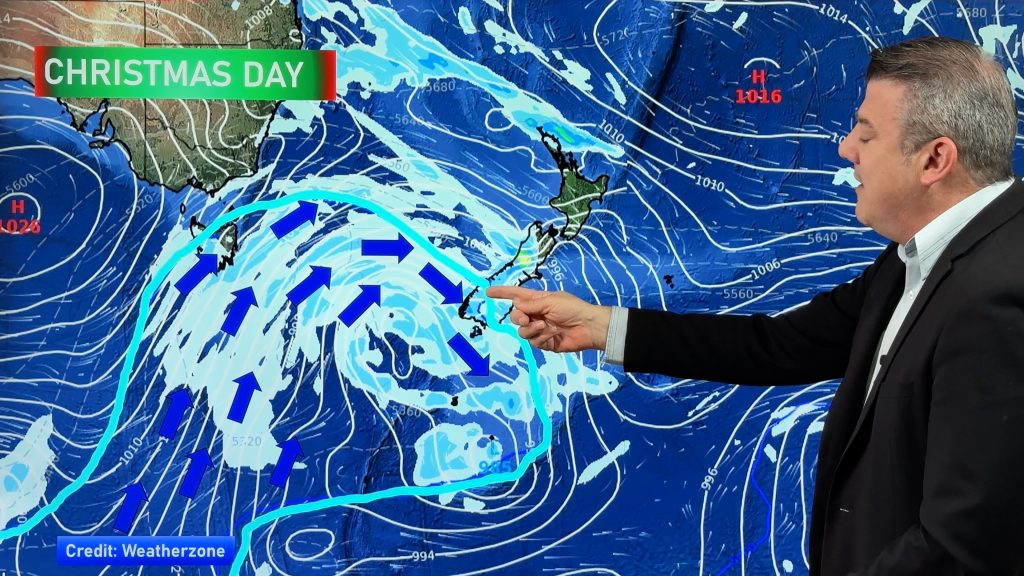Where’s the rain? Cyclone Cody misses NZ knocking out January rain forecasts
16/01/2022 9:16pm

> From the WeatherWatch archives
WeatherWatch’s ClimateWatch update for January summed it up: If the tropical storm from the north of NZ misses us, dry weather will prevail.
The narrow hit-and-miss nature of tropical lows is what WeatherWatch.co.nz often describes as a “wild card” for those who need rain in summer. A tropical low can bring one or two month’s worth of rain in just a day or two. But when these storms miss us – as Cyclone Cody has mostly done – then we’re left looking at the odd shower and weak cold front as the only rain generators.
As WeatherWatch.co.nz exclusively has been saying for months – La Nina doesn’t always mean it will rain in NZ. This means long range climate forecasts from the Government climate forecasters and even the private sector may not be so accurate this month. With NZ located halfway from the equator to Antarctica we shouldn’t always draw a direct line with the tropical conditions and how they will impact NZ.
WeatherWatch.co.nz has always had a policy of being upfront when the forecasts don’t pan out – because educating people on why things don’t pan out can make future forecasts more accurate for you.
Long range modelling IS accurate. What often isn’t accurate is the precise placement of lows. “When we track a storm like Cody the models often accurately pick it 15 days out, which is remarkable” says WeatherWatch.co.nz head forecaster Philip Duncan. “What we can’t do with high accuracy is precisely place where the very centre of these storms might be, sometimes not even until a day or two before it arrives. We get a rough idea, but when you’re tracking a tropical storm in NZ we might know two weeks out that it’s coming our way, but the air pressure zones over Australia, NZ , the Pacific and the Southern Ocean are all “breathing” and moving parts which contribute to the precise tracking of the storm – and whether it will rain at your house or not. It’s like a liquid jig-saw that slowly changes shape each day so long term precision is the hardest part of all – not just seeing the storm or rainmaker”.
Mr Duncan says the computer modelling takes the best data and crunches the forecasts – and while the modelling accurately picked Cody, the very slight jog to our east as it moved in meant the rain failed to reach us … instead around 80 to 150mm will now fall out at sea just east of NZ – covering an area about the size of the North Island.
WHEN IS THE NEXT RAIN EVENT?
Some cold fronts and rain exiting Australia will see wet weather in the South Island in the coming days, but these systems usually deliver very little to the North Island in summer.
For the North Island it’s a matter of waiting for the next “tropical or sub-tropical window” which may be later this month. Another tropical cyclone is forecast around the Fiji area in the coming 14 days and may drift into the NZ area. “The problem with these tropical lows is it’s a bit like a bowling ball rolling towards us from the tropics and NZ is just two pins surrounded by nothing. In this analogy the ball can easily miss us, which is what we see with Cyclone Cody today – a serious storm, but it’s just offshore to the east of the North Island like a bowling bowl in the gutters” says Duncan.
All eyes will be on the tropics and the northern Tasman Sea area later in January.


*Map/Data courtesy of the US Government (NIWA – a NZ Government Agency – refuses to share their tax funded rainfall data with WeatherWatch.co.nz and our readers due to NIWA’s own commercial reasons to strongly compete with those that fund them).
- WeatherWatch.co.nz
Comments
Before you add a new comment, take note this story was published on 16 Jan 2022.




Add new comment
Peter Thomas Langer on 16/01/2022 11:17pm
its only this current weather pattern thats all there use to be wet jans and febs i have records its also making aus wetter than normal as the rain cant come here
Reply